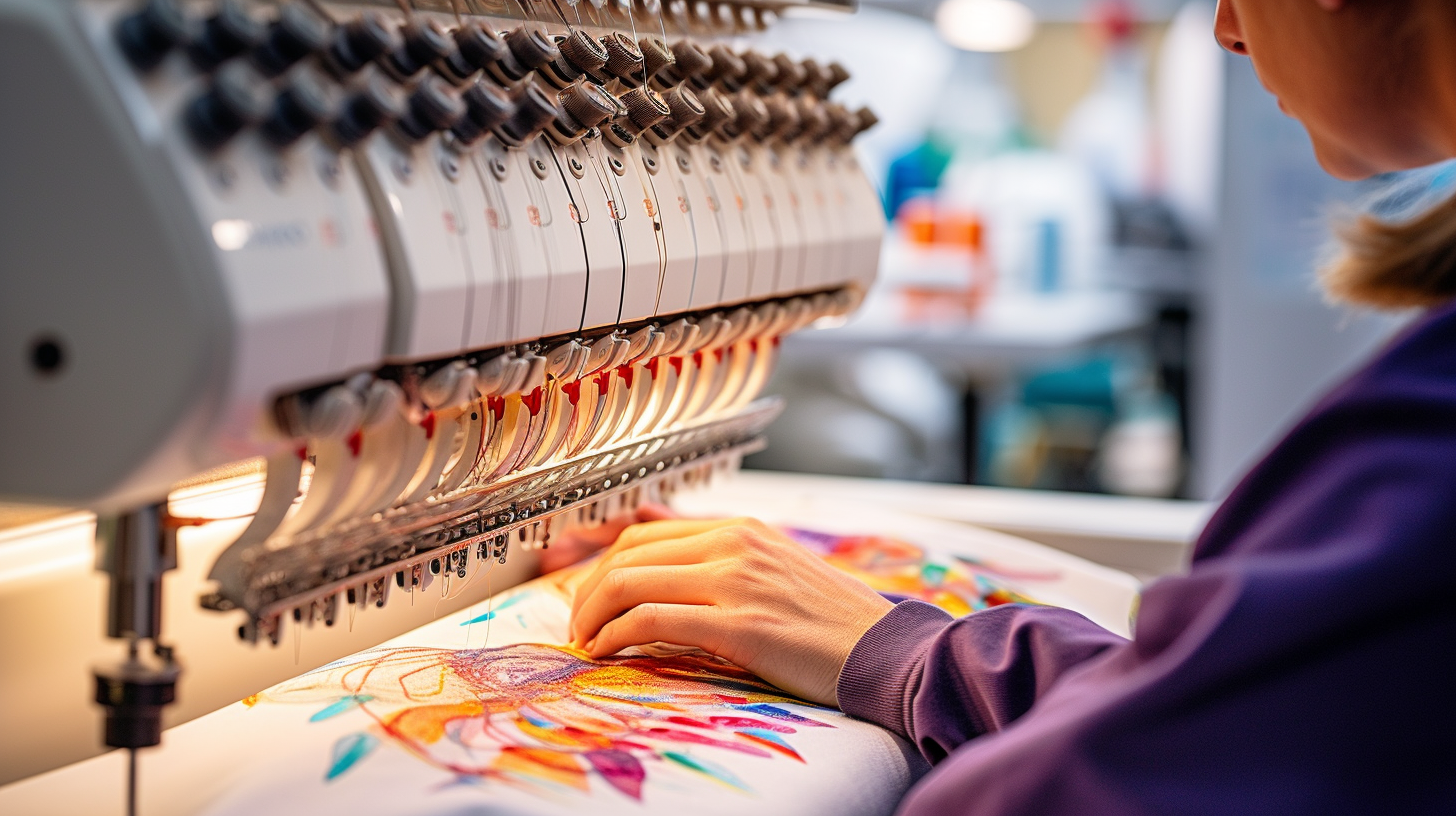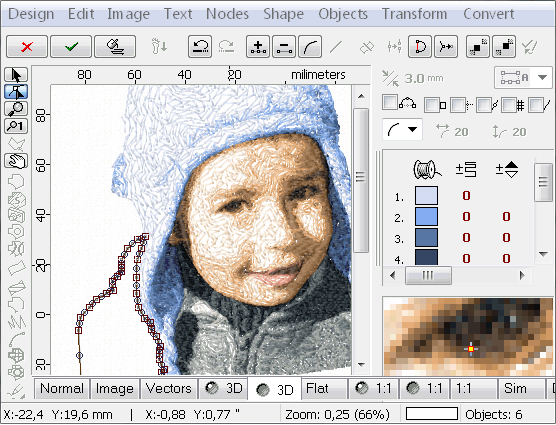Specialist Digitizing for Embroidery: Quick and Reliable Solution
Specialist Digitizing for Embroidery: Quick and Reliable Solution
Blog Article
Streamlining the Art of Needlework Digitizing: Step-by-Step Guide
Needlework digitizing is a precise craft that requires accuracy and creative thinking. As technology remains to advancement, the digitization process has ended up being much more easily accessible, enabling fanatics to bring their detailed styles to life effortlessly. In this guide, we will certainly unravel the intricacies of embroidery digitizing, breaking down each action systematically to simplify the procedure and encourage both beginners and seasoned embroiderers alike. Keep tuned to discover exactly how you can streamline this detailed art type and transform your innovative visions right into magnificently embroidered masterpieces.
Recognizing Embroidery Digitizing Software Program
Embroidery digitizing software application offers as a critical device for transforming intricate layouts into digital styles suitable with embroidery devices, promoting specific sewing and customization. This specialized software program enables individuals to import numerous photo documents formats, such as JPG or PNG, and transform them right into embroidery machine-readable styles like DST, EXP, or PES - Digitizing for Embroidery. By using functions like stitch editing, padding choices, and thread shade option, digitizing software program makes it possible for users to manage every element of the design procedure
In addition, advanced embroidery digitizing software program uses devices for producing intricate designs, adjusting stitch thickness, and including complex details. Individuals can likewise preview the style before sewing it out, guaranteeing precision and decreasing errors. Furthermore, lots of software application supply automated functions that aid improve the digitizing process, saving time and effort.
Comprehending the capabilities of embroidery digitizing software program is important for achieving high-quality results in needlework tasks. By mastering this tool, embroidery lovers and specialists can unleash their creative thinking and bring complex styles to life with accuracy and effectiveness.

Selecting the Right Layout Documents
After familiarizing yourself with the abilities of needlework digitizing software program, the next critical action in the process is selecting the best layout declare your project. Digitizing for Embroidery. When picking a design apply for embroidery digitizing, it's important to think about the intricacy of the design, the dimension of the last product, and the sort of textile you will be collaborating with
For detailed layouts with great details, a high-resolution image or vector documents is advised to make sure that the embroidery device can precisely reproduce the layout. Furthermore, the size of the last item plays a significant function in choosing the ideal style file. Larger designs may call for higher resolution documents to keep clearness and sharpness.
Additionally, the kind of material you will be embroidering on influences the selection of layout file. Different fabrics might require adjustments in the design data to make sure that the stitches are properly straightened and the style appears as meant. By meticulously picking the best layout documents based on these elements, you can establish on your own up for a successful needlework digitizing process.
Digitizing Devices and Strategies
Making use of specialized software application and precision techniques, digitizing tools are important in transforming complex layouts into embroidery-ready files. Embroidery digitizing software program, such as Wilcom, Hatch, or Embrilliance, provides the needed platform to transform artwork into stitch data. These programs provide features like stitch editing, underlay options, and lettering devices to make certain the style converts seamlessly onto material.
Among the key techniques in digitizing is producing a clear course for the embroidery device to follow. This involves digitizing each element of the design with accuracy, figuring out stitch types, densities, and instructions. By making use of tools like digitizing tablets or software-specific plugins, embroiderers can accomplish more tips here a high level of precision in their digitized styles.
Moreover, mastering the art of padding sewing is vital for producing high quality embroidery. Underlay sewing stabilizes the material and produces a structure for the style, ensuring that the final product is both aesthetically attractive and lasting. By understanding these digitizing tools and techniques, embroiderers can raise their craft and bring elaborate designs to life with precision and efficiency.
Personalizing Stitch Kinds and Instructions
The selection of stitch types can substantially influence the general appearance and structure of the embroidered style. By purposefully integrating these stitch types, embroiderers can accomplish depth and measurement in their layouts.
Moreover, the direction of stitches plays an important function in enhancing the visual allure of the final needlework. Numerous stitch instructions can add structure, emphasize particular elements, and create visual interest. As an example, transforming the angle of stitches can imitate motion or natural patterns like fur or feathers. By try out various stitch angles and patterns, embroiderers can bring their designs to life with Related Site impressive detail and intricacy. Mastering the art of customizing stitch types and directions empowers embroiderers to unleash their creativity and raise the high quality of their work.
Screening and Refining Your Digitized Design
To ensure the accuracy and top quality of your digitized layout, extensive testing and refinement are essential action in the embroidery digitizing process. Once you have finished the digitization of your style, it is critical to check it before proceeding with the real needlework. Examining enables you to determine any kind of possible problems such as string breaks, sew thickness troubles, or layout distortions that may influence the outcome.

After testing, it is vital to fine-tune your digitized style based upon the responses from the test sew-out. This may involve tweaking stitch settings, readjusting thickness, or making modifications to the general design to attain the preferred end result. By repeating with testing and refinement, you can adjust your digitized design to excellence before progressing with the real see here now embroidery process.
Conclusion
In conclusion, grasping the art of embroidery digitizing calls for a comprehensive understanding of the software, selecting the best design file, using digitizing tools and strategies, customizing stitch kinds and instructions, and screening and refining the digitized style. By complying with these actions, embroiderers can simplify the digitizing process and develop high-quality embroidered designs with precision and effectiveness.
Report this page